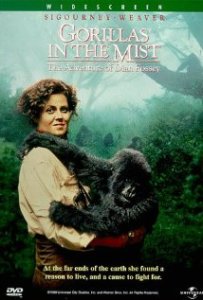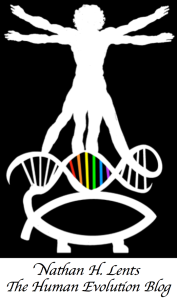
Science moves so fast in our modern era that we forget how young some scientific disciplines really are. Darwin founded evolutionary biology just over 150 years ago. Mendel did the same for modern genetics around the same time, although his work didn’t blossom (pardon the pun) until several decades later.
The scientific study of animal behavior didn’t really begin until well into the 20th century with the pioneering work of Ivan Pavlov, Konrad Lorenz, John Watson, and B.F. Skinner.

However, while those pioneers were mostly studying animals in laboratory conditions, others began to argue that to fully understand animal behavior, one must observe them in the wild, and over a great length of time, not just weeks or months. In the 1950s and 60s, as scientists began to patiently observe various animal species in their native environment and natural social context, they were overwhelmed by the intricate complexity they saw. This was most pointed in the study of primates.
As anthropologist Louis Leakey became the leading expert in classifying and understanding the emerging human fossil record, he also came to believe that understanding primate behavior was absolutely essential to understanding how human ancestors had lived. He sought promising young protégés to begin the long, arduous work of documenting the lifestyles of our closest extant relatives. After several disappointments, he considered embarking on this task himself. Then, he met Jane Goodall.

Goodall first began observing the chimpanzees of Tanzania back in 1960, an ongoing project that is now 55 years old. She was the first to document and attempt to understand the social behavior of chimps, which turned out to be incredibly more complex than anyone previously appreciated. So thorough and influential was Goodall’s work, that she is considered not just a founder of primatology, but one of the great pioneers of modern field biology. She convincingly demonstrated that one could never appreciate the richness of animal social interactions without observing them for at least a full generation.

When Goodall began her work, she didn’t have an undergraduate degree, let alone a doctorate. However, she earned her PhD in Ethology from Cambridge University in 1965, one of a tiny handful of individuals admitted to the graduate program at Cambridge without holding a bachelors degree.
Doctor Jane, as she’s often called at the research center that she founded, did much more than just catalog the diet, habitat, and mating behaviors of the chimpanzees, she discovered their great emotional depth. Among her many discoveries were that chimpanzees fashion and use tools, a skill thought to be uniquely human at that time. She also broke with many conventions, including by giving the animals she observed names instead of numbers. While other researchers have expanded on her work, we owe almost everything we know about how chimpanzees live in the wild to Dr. Jane Goodall.
Just as Goodall was getting started with the chimps at Gombe National Park, Leakey picked another young talent and encouraged her to start documenting the lifestyle of gorillas. Dian Fossey then did for gorillas what Goodall did with chimps, spending more than two decades carefully studying their complex social structures and family life. As Goodall had, she found that her research subjects were all unique individuals capable of tenderness, kindness, and grief that more than matched their legendary strength and ferocity.
Tragically, Fossey’s choice of research location brought her into the crosshairs of political turmoil and the animal poaching market. She fled from Congo during the political crisis of 1967 and ended up in Rwanda, where she was murdered two decades later almost certainly due to her opposition to poaching, wildlife tourism, or both. Her 1983 book Gorillas in the Mist was later made into a movie of the same name, with Sigourney Weaver earning a Golden Globe and an Oscar nomination for her powerful portrayal of Fossey.
The third member of the trimates is Birutė Galdikas. Unlike Fossey and Goodall, it was Galdikas who first approached Leakey to propose a large-scale research project into the lives and social structures of orangutans. He was skeptical at first, given the obscurity of orangutans at that time, and the fact that they are more distantly related to humans than chimps and gorillas are. She finally convinced him to support her plans and she began her studies in 1971.
Found only in the nearly impenetrable jungles of Malaysia and Indonesia, almost nothing was known (in the West) about orangutans until Galdikas began to publish her findings. To this day, she is the leading expert on orangutans and their social and ecological lives. Her work is now as much about conservation as it is about primatology, given that tropical rainforests worldwide are being destroyed at shockingly rapid rates. The orangutan is now critically endangered, like so many other tropical species.
It is difficult to overstate the scientific impact of Goodall, Fossey, and Galdikas. Their three subject species (chimps, gorillas, and orangutans, respectively) are our three closest living relatives, and these women have produced more understanding about them than any other scientist, living or dead. (Possibly more than ALL other living scientists combined, especially in the case of Galdikas.) Louis Leakey was absolutely correct that understanding how these species lives illuminates how our long-ago ancestors lived. Indeed, studying primate behavior illuminates human behavior – we are not so different!
All three of the “trimates” (a term coined by Leakey himself) worked in the most daunting of conditions. The work was arduous and tedious, the climate was unforgiving, there were political and logistical complications, and it was incredibly difficult to maintain funding and other forms of support. Leakey got them started by convincing the National Geographic Society to provide initial funding, but it was up to them to keep it going.
Accordingly, each of these truly Herculean scientists started research institutes and foundations to fund their work and other important science. The Jane Goodall Institute, the Karisoke Research Center (founded by Fossey), and the Orangutan Foundation International (founded by Galdikas) are part of the remarkable legacy of these tireless women, whose work in understanding and protecting humanity’s closest living relatives will never be finished.







Jane Goodall’s PhD is from Cambridge(England) not Columbia (NY)
LikeLike
Quite right. Corrected. Thanks.
LikeLike
Where is Claudine André and her fight for the Bonobos???
https://en.wikipedia.org/wiki/Claudine_André
LikeLike
Ms. André indeed has been doing great work on behalf of the bonobos for more than 20 years! She has won several awards and deserves many more, as well as our respect and support. This post was specifically about “Leakey’s Angels,” the three women that launched the modern (Western) study of primates in their natural habitat, dating back to the 1960s, from whom Claudine André surely drew inspiration. Leaving her out of this post was definitely not a snub. The “trimates” (a term Leakey himself coined) were the forebears of many activists, scientists, and heroes such as Ms. André. These three deserve special mention for being the pioneers and for their incomparable contribution to the science of primatology.
LikeLiked by 1 person
Anyway it is an injust reading, I understand such as many readers that maybe Claudine André it is not one of the original Trimates but when you are mention The Founding Mothers of Primatology you are reffering the Great Apes and I do believe that André´s work needs to be mention, remember that the Bonobos are one mainstay that as primatologist we need to talk about. Thanks for your response,
LikeLike
Reblogged this on pankeahomtfy.
LikeLiked by 1 person
Reblogged this on bangs was here and commented:
Excuse me while I cry and realign my life choices.
LikeLike
I am so happy to see this blog since many people still are unaware of the orangutan/Borneo aspect of the great ape studies. Have you seen the Great Apes Survival Board Game?
LikeLike